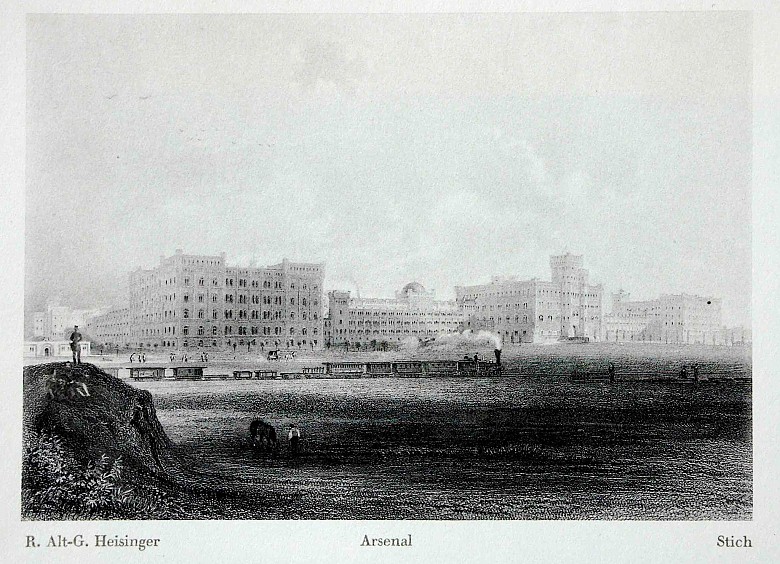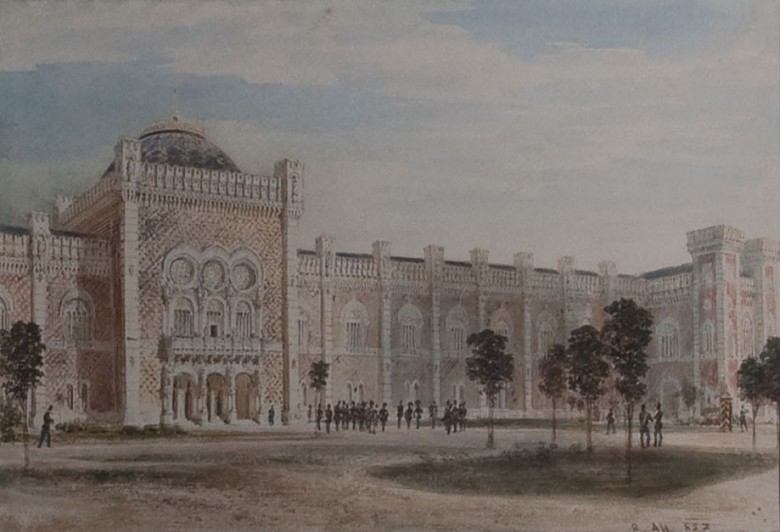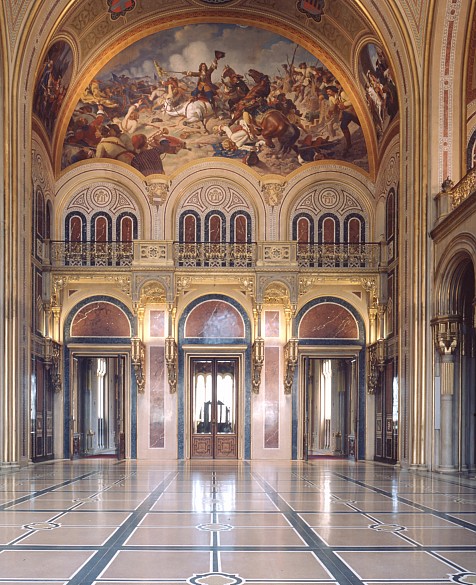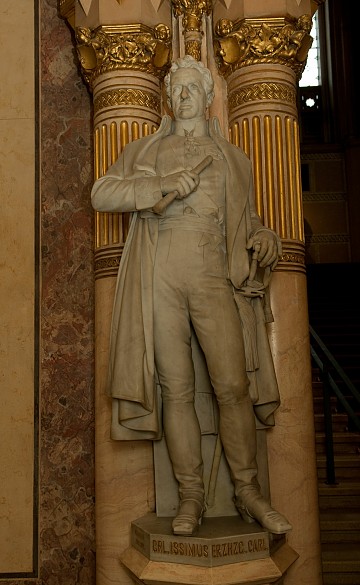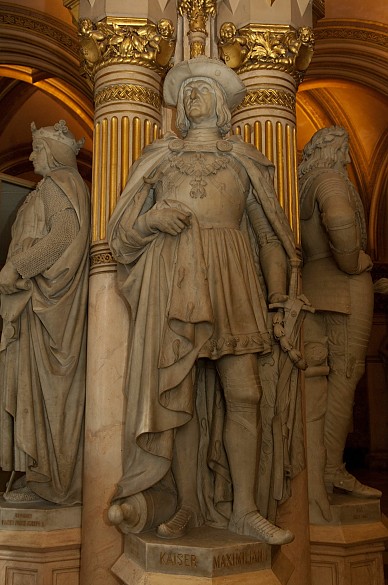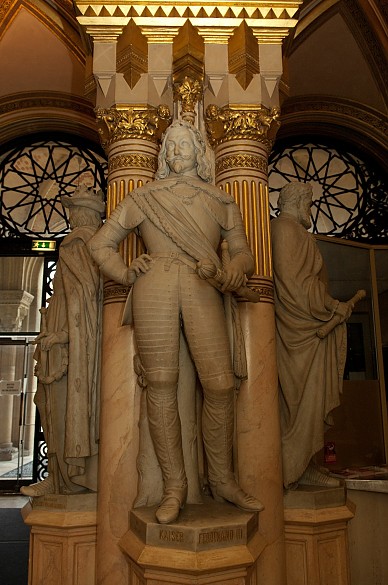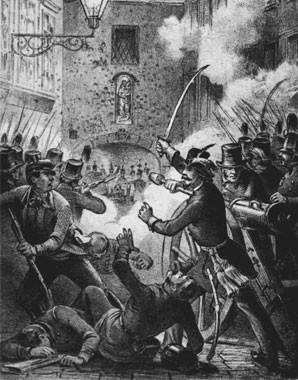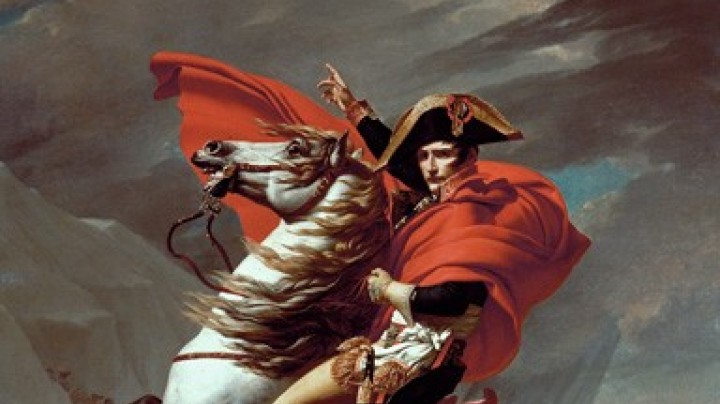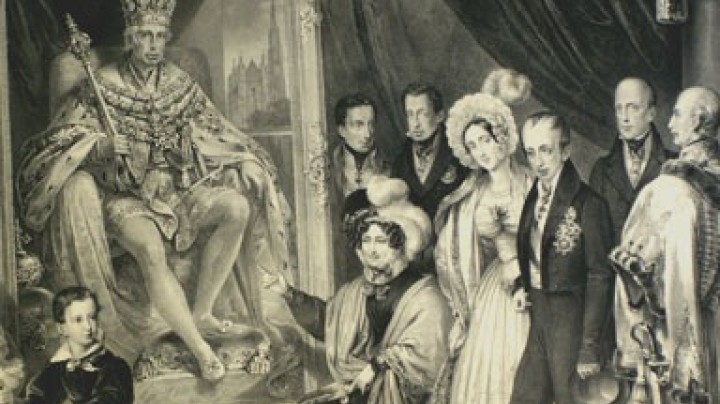The Vienna Arsenal – from Hall of Fame of the Austrian army to centre of the sciences
The decoration of the Heeresgeschichtliches Museum (Museum of Military History) in the Arsenal, a complex originally built as a fortification, still hints at the ‘glorious victories’ of the Imperial-Royal Army.
The revolution of 1848 had clearly demonstrated that the old defence strategies for the city were obsolete. The storming of the Zeughaus (Armoury) on 7 October provided the final impetus for realizing plans that had been developed under Franz II (I) to centralize arms production.
Subsequently a complex of red-brick buildings in Romantic-Historicist style displaying Italianate, Byzantine and medieval elements was erected between 1849 and 1856 on a site near the present-day Southern Railway Terminus in Vienna’s third district. The Arsenal was thus the first of three complexes forming a triangle of fortifications intended to replace the old city walls; it was followed by the Rossau Barracks and the no longer extant Franz Joseph Barracks on Stubenring. The laying of the final stone was accomplished at a ceremony attended by Emperor Franz Joseph and his wife Elisabeth on 8 May 1856.
However, the purpose of this edifice went beyond purely practical concerns: it was also constructed to provide an impressive complex for the imperial capital. The central building in the complex was a museum showcasing the fame of the Imperial Army, the entrance hall to which was lined with 56 life-size marble figures of prominent generals. Theophil Hansen was commissioned to design the building, and Franz Joseph himself influenced the design of the interiors. The decoration emphasizes the renown of the army: the ceiling painting in the Hall of Fame on the first floor shows scenes from military victories of the past, while the galleries displayed countless trophies from victorious campaigns. The Imperial and Royal Army Museum was opened by Emperor Franz Joseph on 21 May 1891.
In the Second World War many of the buildings in the Arsenal complex were badly damaged, including the museum, which was however rapidly rebuilt, reopening as the Heeresgeschichtliches Museum in 1955. Other buildings in the complex were also rebuilt and a number of new buildings erected. Currently there are plans to establish a centre for the sciences in this historical military complex.
